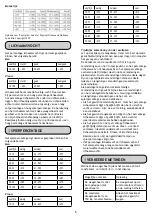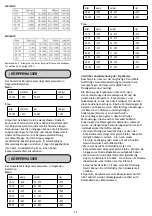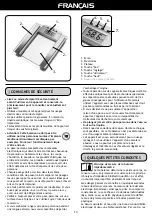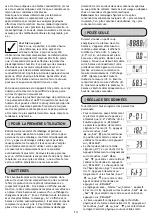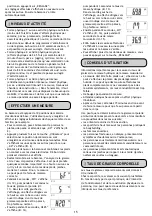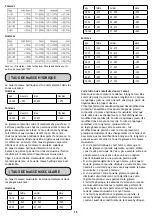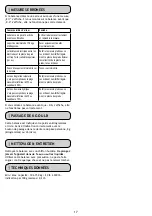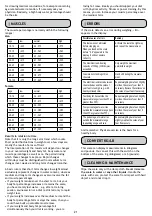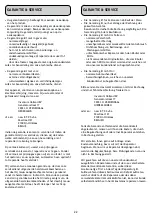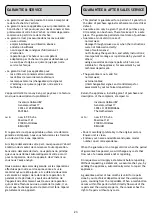
20
of a training/dietary program. After 8-12 weeks of
continuous training/diet, you can change to the next
level of activity.
• A 2: Moderate physical activity.
30 minutes of physical exercise 4 to 6 times a week.
• A 3: Intensive physical activity.
Daily intensive training or physical work (e.g. intensive
running, construction work, etc.). For this mode you
should have an overall high level of mobility, endurance
and power and maintain this level over a longer period
of time.
After you've entered your personal setting, weight, body
fat and other values can be calculated.
• Briefly step onto the scale first and wait untill the
display ”0.0” appears.
• Select the memory preset where
your basic personal data are stored
by pressing the buttons “up”
and
“down”
repeatedly. The data are
displayed consecutively until “0.0”
(Ill. 2) appears.
• Step onto the scale barefoot and
make sure you're standing on both
electrodes. First your body weight is
determined and displayed.
• remain standing on the scale; now
the body fat and body water analysis
is performed. This can take a few
seconds.
Important: Your feet, legs,
calves and thighs must not touch
each other, as otherwise the
measurement cannot be performed
correctly.
The following data are displayed:
• Body fat percentage in % (Ill. 10-11)
• Water percentage in % (Ill. 12-13)
• Muscle percentage in % (Ill. 14-15)
• now all measured values are
displayed consecutively and the
scale switches off.
Important when measuring body fat/body water/muscle
percentage:
• The measurement may only be carried out while
barefoot and it is helpful if the soles of your feet
are slightly damp. Completely dry soles can result
in unsatisfactory results, as they have insufficient
condutivity.
• Stand still during the measurement.
• Wait several hours (6-8) after unusually strenuous
activity.
• Wait approx. 15 minutes after getting out of bed so
that the water in your body can be distributed.
The measurement is not reliable for:
• Children under approx. 10 years of age;
• Professional sporters and bodybuilders;
• Pregnant women;
• Persons with fever, undergoing dialysis, with symptoms
of edema or osteoporosis;
• Persons taking cardiovascular medication. Persons
taking vascodialating or vascoconstricting medications;
• Persons with substantial anatomical deviations in
the legs relative to their total height (leg length
considerably shorter or longer than usual).
The following body fat levels provide you with a
guideline (for furhter information, please consult your
doctor!).
A lower level is often found in athletes. Depending on
the type of sports, the intensity of training and the
person's physical constitution, levels can be achieved
that are even lower than the specified guidelines.
Women
Age
Very good Good
Average
Poor
< 19
< 17%
17-22%
22,1-27%
> 27,1%
20 - 29 < 18%
18-23%
23,1-28%
> 28,1%
30 - 39 < 19%
19-24%
24,1-29%
> 29,1%
40 - 49 < 20%
20-25%
25,1-30%
> 30,1%
> 50
< 21%
21-26%
26,1-31%
> 31,1%
Men
Age
Very good
Good
Average
Poor
< 19
< 12%
12-17%
17,1-22% > 22,1%
20-29
< 13%
13-18%
18,1-23% > 23,1%
30-39
< 14%
14-19%
19,1-24% > 24,1%
40-49
< 15%
15-20%
20,1-25% > 25,1%
> 50
< 16%
16-21%
21,1-26% > 26,1%
based on: "Prin Labs for Physical Fitness and Wellness. 1st
edtition Copyright 1999"
The body water percentage is normally within the
following ranges:
man
Age
poor
good
very good
10-100
< 50%
50-65%
> 65%
Woman
Age
poor
good
very good
10-100
< 45%
45-60%
> 60%
Body fat contains relatively little water. Therefore
persons with a high body fat percentage have body water
percentages below the recommended values. With
endurance athletes, however, the recommended values
could be exceeded due to low fat percentages and high
muscle percentage.
Body water measurement with this scale is not suitable
| tAking meAsurements
| tips
| boDy fAt percentAge
| boDy WAter

